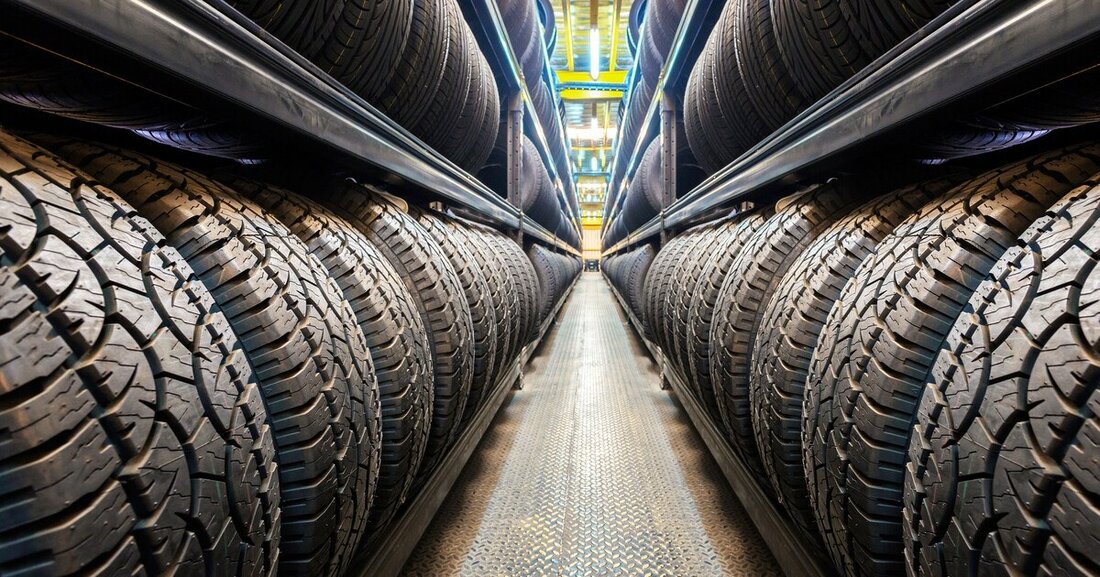Valuable tips for the tire business
Times are getting tougher, including in the tire trade. This makes it all the more important to exploit potential in additional business.

Valuable tips for the tire business
The Austrian tire market is a bit like the famous glass, which - depending on the viewer's attitude - is either empty or half full. 5.3 million tires were sold in this country in 2019, 4.7 million in the Corona crisis year 2020, and almost 5.1 million again in 2021. “According to estimates, the market will settle around this level in the medium term,” says Michael Peschek-Tomasi. The managing director of Reifen Partner GmbH (point-s) gave a lecture at the VRÖ Reifentag, an online event organized by the Austrian Association of Tire Specialists, which perfectly fit the general theme of the event “Challenges for the tire business in the future”.
The market is therefore saturated, but from a positive perspective it is at least stable. However, one thing it will never be is boring! This is ensured by ongoing innovations and further developments. “In the tire world, growth comes from more innovative and therefore more expensive tires,” says Peschek-Tomasi. And bigger tires too! In 2020, around 14 percent of all premium tires sold in Austria were larger than 18 inches, but in 2026, according to market research, 25.3 percent of tires will be produced in 18 inches and larger. This means that one in four premium tires produced will be at least 18 inches in size. “The classic 206/55 R16 will be replaced by a variety of 18 and 19 inch dimensions in which the cars will be delivered as original equipment,” says Peschek-Tomasi. As a result, the average price per tire will increase significantly. The variety of items will also increase significantly, which in turn will result in a correspondingly higher storage requirement. At the same time, however, the space required in the storage depots.

"By changing from 16 inches to 18 inches, you have to convert the shelves and lose 18.9 percent of the height per shelf. So every fifth shelf is eliminated," explains Peschek-Tomasi. In other words: storage capacities are dwindling and must be expanded accordingly. More space is also required in the delivery vehicles. And the higher tire prices increase the remaining inventory and thus the tied up capital. According to Peschek-Tomasi, remaining inventory can increase by 73 percent. In short, the tied up capital increases and the tire dealers' profits decrease. “I think many people in the industry are not aware of how big these effects are,” says the point-s boss.
This makes it all the more important to calculate precisely, optimize work processes and locate bottlenecks in operations as well as additional sources of income. The latter was the topic of another lecture at the VRÖ Tire Day: that of Peter Eisele from Flow Consulting. “You should always offer customers an additional service,” advises Eisele. This could be, for example, washing the wheels or balancing the wheels.

And of course the storage of bikes. “This is the supreme discipline and strengthens customer loyalty,” says Eisele. On top of that, the stored wheels could be prepared before the season, thereby increasing throughput times. According to Eisele, 400 stored sets of wheels per stage are the size that covers the costs well and also creates space for investments. In any case, 200 sets are too low; the tire business would no longer be profitable here.
With 400 sets per stage, you can expect 20 minutes per wheel change. A cycle of 30 minutes, on the other hand, is only necessary for a large number of wheels that are not in storage, as these must first be unloaded and inspected, so no preparatory work is possible. In any case, you should check the storage to find out whether, for example, new tires or repair work are required.
When balancing, Eisele advises not to just offer this casually and ask “Should we balance?”, but instead to go into more detail with the customer and, for example, point out that balancing would be appropriate because it wasn’t done last time. In addition, you should even offer balancing several times. Even if a customer may have said no to this in the office, the mechanic should then point out again that there is an imbalance that he discovered through routine inspection of a wheel. Most of the time, customers would then agree and place an order.
According to Eisele, additional services such as wheel washing or wheel alignment would also provide a good gross profit. The wheel alignment is even “pure gross profit”, but is still almost “neglected”, i.e. neglected. Wheel washing, in turn, costs around 50 cents to 1 euro per set of tires in terms of operating costs, provided you have a machine for it. But you can charge around 15 euros for this.
“The washing machine is often in the wrong place; it has to be accessible and the walking distances in the workshop have to be short,” says Eisele. Two to three washing machines are ideal, as long as you offer laundry regularly and also for bikes that are not in storage. According to Eisele, if you have 1,000 storage items, you should even consider a fully automated machine. And he has another tip: The wheel washing doesn't have to be done by the fitter, but rather by a cheaper worker, for example former employees who could earn something extra before the season. In this way, personnel costs can be kept within limits. In general, Eisele advises tire dealers one thing: they should offer their services confidently and charge accordingly.

 Suche
Suche
 Mein Konto
Mein Konto